A series of works exploring how our bacterial flora might be enhanced to create human super-organisms.
Hypersymbiotics™ Post Pandemic Edition
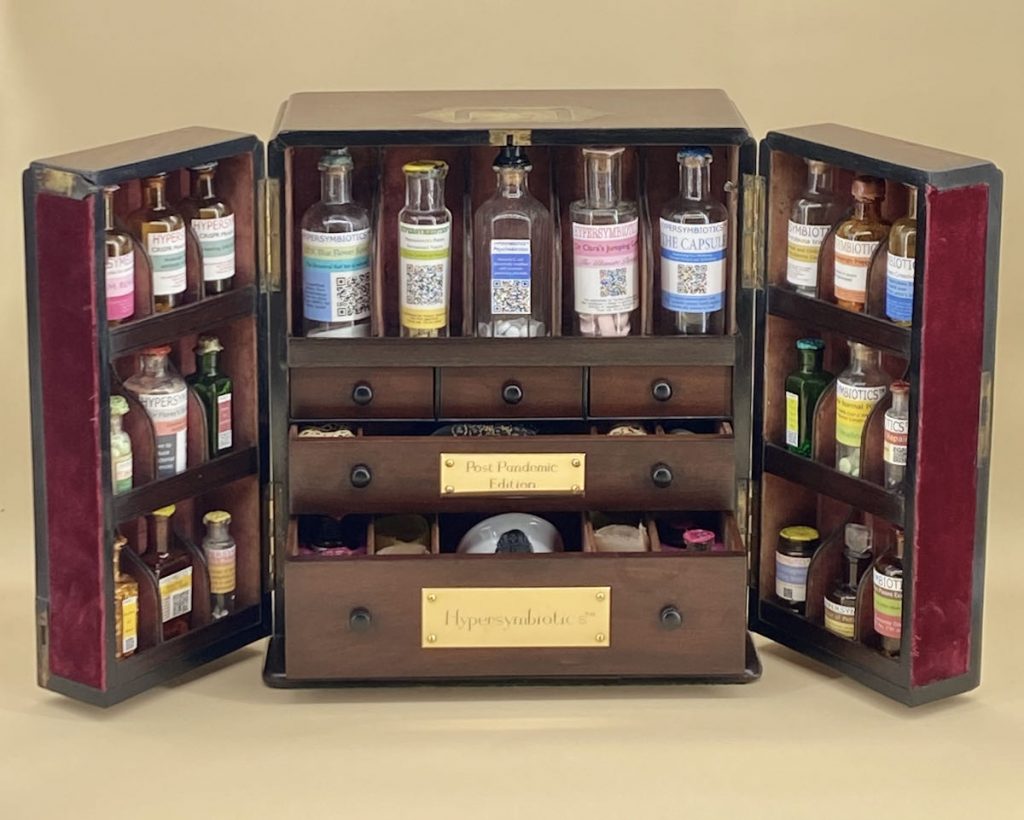
“What should your medicine cabinet contain in the future? Perhaps a vial of “Psychobiotics”, containing serotonin producing plasmids that could live inside probiotic E. coli in your gut and make you happy? This work builds on artist Anna Dumitriu’s extensive practice at the intersection of art and science, and considers the promises and pitfalls that new biotechnologies holds. How should we navigate in the stream of contradictory health headlines, and separate fact from fiction, hope from hype, and effective treatments from snake oil? Adam Bencard – Medical Museion)
The full list of contents and collaborators can be found here.
The production of the synthetic plasmid DNA for the “Psychobiotics” element was kindly supported by Genscript.
“Hypersymbiotics™: Post Pandemic Edition” was commissioned by Medical Museion

Exhibitions
“The World is in You”, a major exhibition curated by Medical Museion which took place from 29th September 2021 to 23rd December 2021 at Kunsthal Charlottenborg in Copenhagen (Denmark).
“Life Eternal” curated by the Nobel Prize Museum took place from 1st October 2022 to 29th January 2023 at Liljevalchs Konsthal in Stockholm (Sweden).
Fragile Microbiomes (solo exhibition) at the Thackray Museum of Medicine, Leeds, UK, from 10th February to 23rd June 2024.

Hypersymbiotics™

“Hypersymbiotics™” (2018) takes the form of a strange apothecary box which draws together many of the artist’s past works involving emerging research in biomedicine and blends them with contemporary pseudoscientific healthcare remedies, helping us to make connections between the past and present. It asks how, as pharmacology becomes increasingly complex, can we tell fact from fiction, or newspaper headline from genuine available therapy?
The cruellest forms of hustling take advantage of those who are most vulnerable, in particular those in poor health. In a situation where access to quality healthcare can be costly, when medical professionals do not have the time to focus properly on patients’ wellbeing, or when treatments are either not available or difficult to access, those in need can easily fall prey to purveyors of untested and unproven alternative treatments. We face a daily barrage of contradictory headlines & an onslaught of stories about new discoveries in biotechnology, many of which are only in the earliest stages of research but these stories offer us a glimmer of hope.

At a time when complex new scientific discoveries are being made almost every day but are far beyond the understanding of laypersons, and when the news stories we read compete to terrify us the most we are more at risk than ever of being hustled into buying into the latest ‘cure’. We are blinded by pseudoscience and media hype about the speed and success of biotechnology and fall victim as easily as our ancestors fell for “Snake Oil” cures. The artwork comprises an altered antique apothecary box, engraved copper, glass, cork, sealing wax, paper and various biomaterials.
An extensive list of the contents and details of the collaborators can be found here.
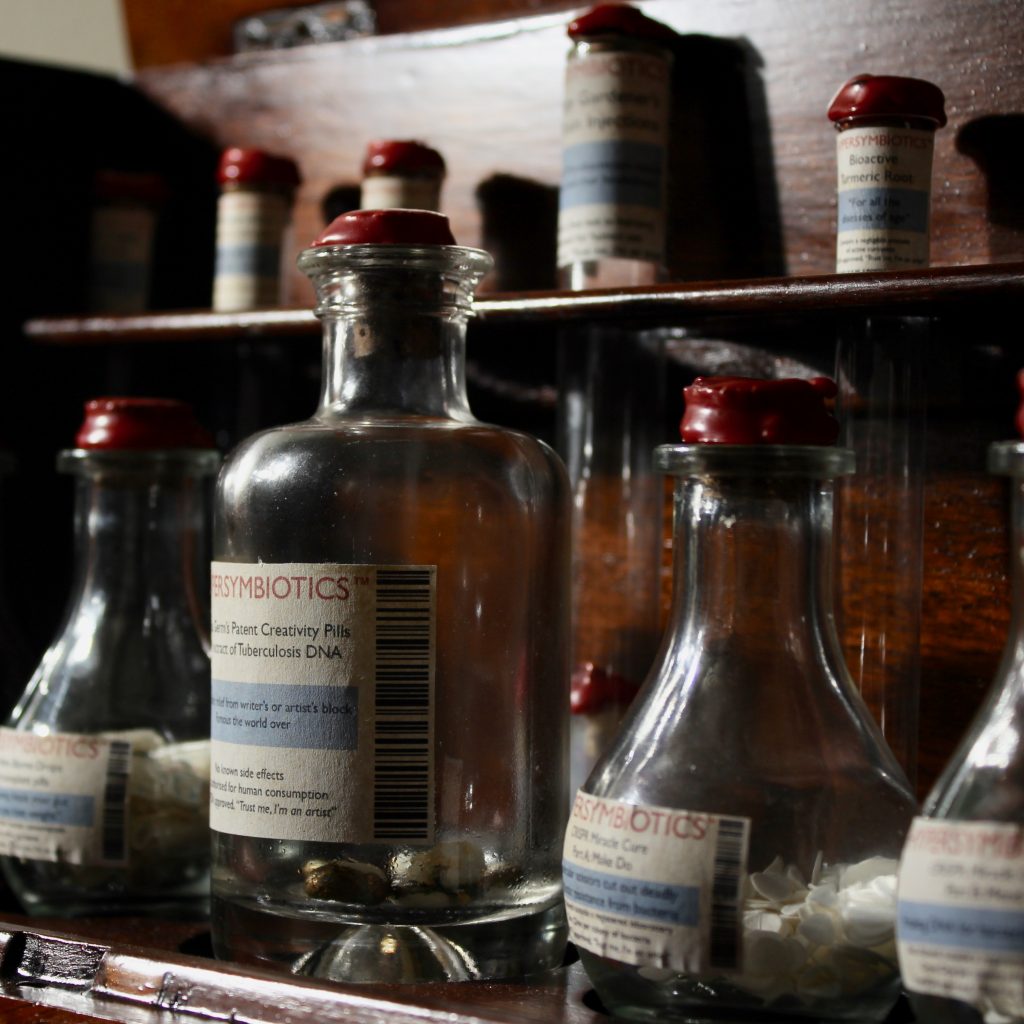
Exhibitions
“Hypersymbiotics™” was originally commissioned for Hustle, the inaugural exhibition of The Science Gallery Lab Detroit, USA. 16th June – 25th September 2018.
“BioArt and Bacteria” (solo exhibition) at The Esther Klein Gallery and the Science Center in Philadelphia, USA. The show ran from 18th October until the 24th November 2018.
“BioArt and Bacteria” (solo exhibition) at Eden Project in Cornwall, UK from 30th March – 1st June 2019.
The Hypersymbiont Enhancement Salon
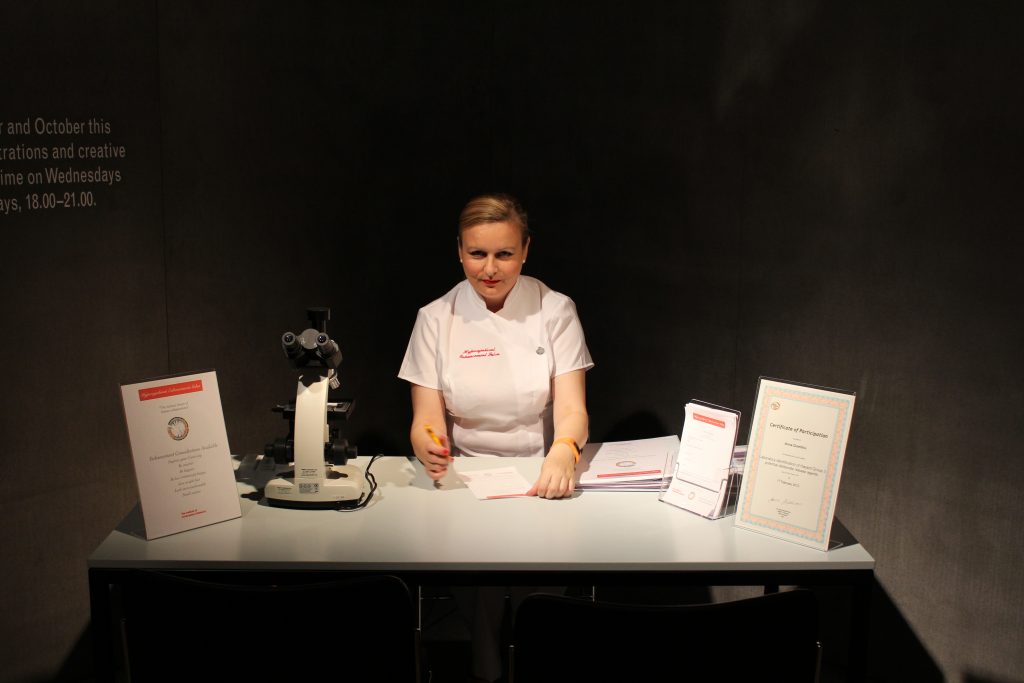
Step into the “Hypersymbiont Enhancement Salon” (2012). This performance artwork by Anna Dumitriu first performed in 2012 and originally commissioned by the Wellcome Collection uses the format of a beauty consultation to demonstrate and discuss the potential ways in which our harmless bacterial flora could be enhanced to create human super-organisms (with better appearances, better health and even better personalities) through our active colonisation with hypersymbionts: bacteria that not only happily co-exist on and inside our bodies, but which actively improve us.

We have naturally co-evolved with bacteria but now, through new technologies, we are starting to have the power to understand and enhance these bacterial symbionts and develop ‘hypersymbionts’ so that we may actually begin to drive our own evolution at a cellular level. Join Anna for a consultation to find out about the potential benefits and risks of this new paradigm for human enhancement.
Thanks to Professor John Paul, Dr James Price and Kevin Cole (from the Modernising Medical Microbiology Project) for their advice and support in creating the performance.
Performances
The work was originally commissioned for the “Superhuman” exhibition at The Wellcome Collection in London, and first performed on 3rd, 4th and 5th October 2012 and then re-performed at The Wellcome Trust in London in November 2013. The performance involved discussions around the complex relationship we have with bacteria (both pathogenic and non-pathogenic) including conversations which focussed on the (often discussed) relationship of Tuberculosis to creativity.

In March 2016 Dumitriu performed an updated “Hypersymbiont Enhancement Salon” at Princeton University in the USA as part of “Multispecies Salon” curated by Eben Kirksey. This new version included updates to the concepts discussed due to scientific advances in the intervening period, and a projection of Dumitriu’s own white blood cells which were infected in vitro in the lab with bovine tuberculosis. Playing with the notional link between tuberculosis and creativity that appears throughout history and was drawn on on previous performances.
Dumitriu worked with Dr Daire Cantillon, Dr Simon Waddell and Professor Martin Llewellyn at Brighton and Sussex Medical School to extract and infect her blood in the lab.
Hypersymbiotics™ Creativity Pills

Anna Dumitriu has artistically explored the drug discovery and drug trial process as well as the area around so called ‘snake oil’ cures. She has worked in collaboration with Modernising Medical Microbiology at the University of Oxford and Wellcome Trust Brighton and Sussex Centre for Global Health Research through the somewhat speculative production of “Hypersymbiotics™ Creativity Pills” (2017) which contain an extract of tuberculosis DNA and exploring the frequently described links between the disease and creativity.
The pill bottle is made from an altered antique sputum cup for tuberculosis patients and the pills are made from a traditional recipe, with tuberculosis DNA and a coating of 24 carat gold.
Exhibitions
The piece premiered at the Museum of the History of Science in Oxford as part of Anna Dumitriu’s solo exhibition BioArt and Bacteria which ran from from 28th September 2017 – 18th March 2018.
Psychobiotics
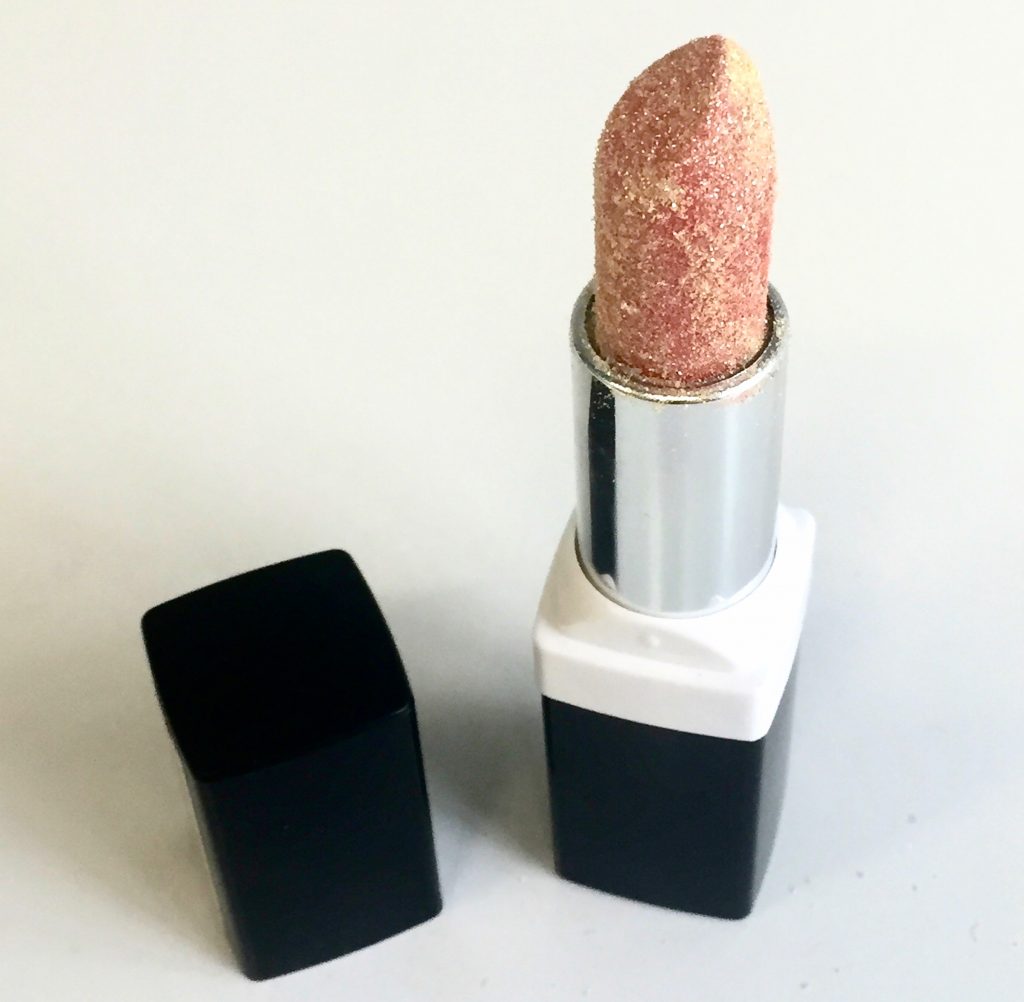
“Psychobiotics”(2015) take the form of ‘products’ for the Hypersymbiont Enhancement Salon, using genuine psychobiotic bacteria genetically engineered by Paloma Portela Torres and her colleagues of the UCL iGEM 2015 team. The team invited Dumitriu to collaborate with them based on her prior work. The team’s genetically modified E. coli expresses a gene which increases Serotonin production, and points the way to the possibility of genuinely augmenting our bodies and minds using bacteria which can make us ‘better’ (in this case happier).
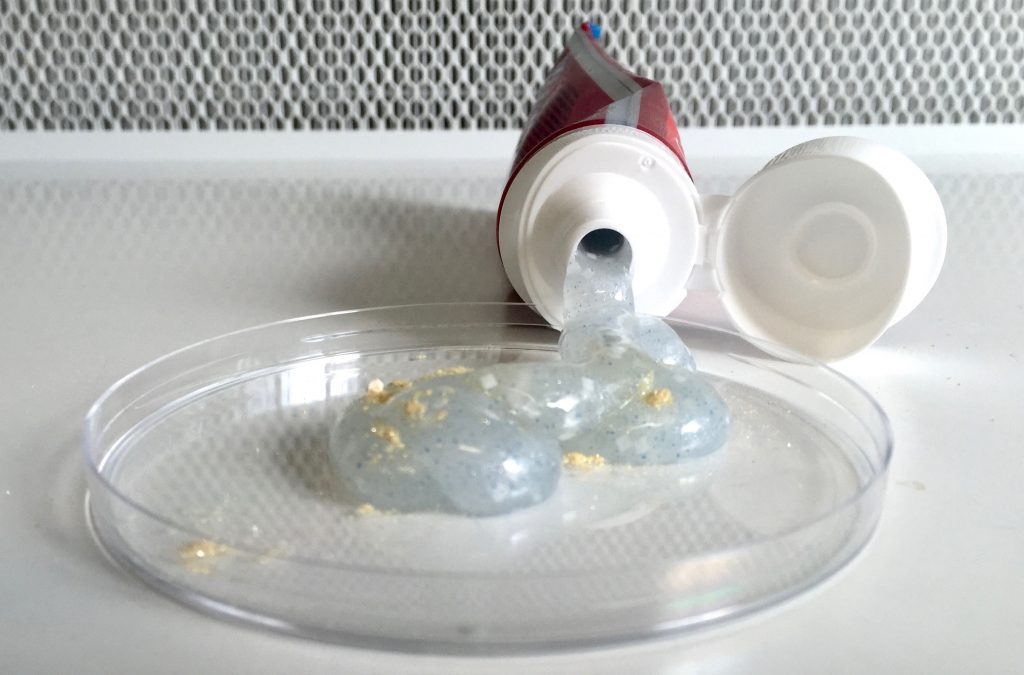
Dumitriu worked with Heather-Rose Macklyne at The University of Sussex to freeze dry the bacteria to make a dust (which was given some added sparkle for cosmetic purposes) and incorporated into toothpaste, lipstick and food: “smile with the hypersymbiont enhancement salon!” Dumitriu and Macklyne also made some fresh jellies containing the necessary antibiotics to enable the bacteria to keep the Serotonin producing plasmid. They were grown and decorated with the bacteria.
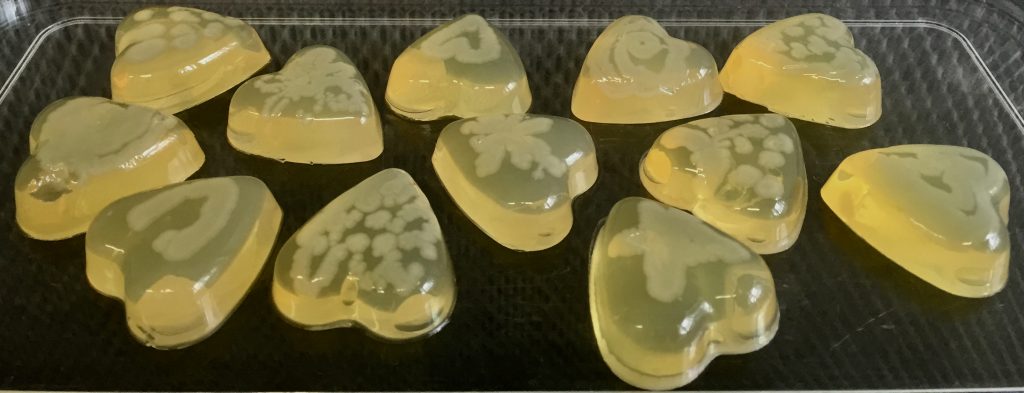
The work was lost, but is being remade for a new and updated version of “Hypersymbiotics™” to launch in Autumn 2021. The plasmid is being recreated by GenScript who have supported the project.
GenScript is a world leader in biotechnology reagent services, providing a diverse array of life sciences products and services to over 100 countries worldwide since being established in 2002. As part of its commitment to providing high quality and attentive service to its loyal clients, GenScript has expanded its scope to supporting the life sciences in more ways than one. With a portfolio that includes custom gene synthesis, therapeutic antibody development, CRISPR/Cas9 gene editing and more, GenScript is uniquely positioned to equip scientifically inquisitive minds with the tools and expertise they need to succeed. From providing scientific researchers with the reagents and optimized workflows they need to carry out their research, to supporting scientific educators and artists seeking to both broaden and heighten scientific knowledge around the world, GenScript continues to strive towards their vision of being the most reliable biotech company in the world, in service of a better and healthier future.
Exhibitions
The 2015 iGEM Jamboree, Hynes Convention Center, Boston USA, September 2015.
“Multispecies Salon” at Princeton University, USA, curated by Eben Kirksey. March 2016
Hypersymbiont Dress
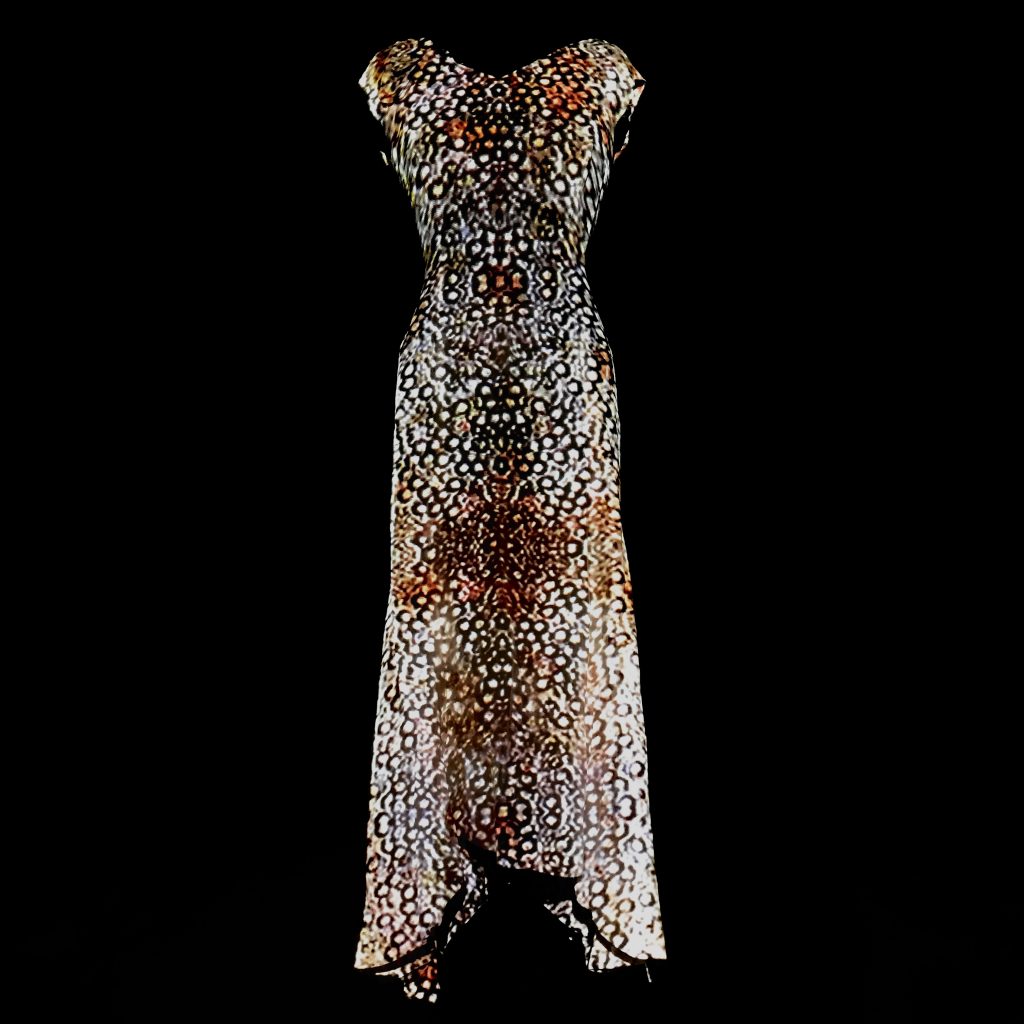
“The Hypersymbiont Dress” (2013-17) is a dress stained and video mapped with bacteria that may have the potential to enhance us. It draws attention to ways in which our own bacterial flora or even pathogens, could be enhanced to turn us into human super-organisms, with improved creativity, improved health and even improved personalities.
The concept of this artwork comes from new technologies, such as whole genome sequencing and synthetic biology, which allow humans to understand symbiotic bacteria and to find possible ways to drive our own evolution at a cellular level. Despite the advancement of technology, it is undeniable that there are still potential risks. The dress is stained with normal environmental bacteria from a Winogradsky Column (a self-sustaining, self-regulating bacterial ecosystem), Mycobacterium vaccae (a soil bacterium that enhances cognitive function by increasing serotonin levels, tested and proved in rats), MRSA (which can interface with the human nervous system and affect how we feel pain), and Bacillus Calmette Guerin (BCG) a form of attenuated Bovine Tuberculosis, a bacterium strongly linked to creativity throughout history.
The video mapping on the dress is created from a film of the artists own blood fighting an infection with BCG (which although used as a vaccine for Tuberculosis can also be a human pathogen in its own right in some cases.
Dumitriu safely infected her own white blood cells in vitro in the lab with bovine tuberculosis. Playing with the notional link between tuberculosis and creativity that has frequently appeared throughout history. She worked with Dr Daire Cantillon, Dr Simon Waddell and Professor Martin Llewellyn at Brighton and Sussex Medical School to extract and infect her blood in the lab.
The embroidery silk used on the dress is stained with pigmented soil bacteria. Additional colours and patterns are created using natural and clinical antibiotics such as madder root, woad and Vancomycin. In this collaborative work, artists and scientists try to show potential ways we can shape the behaviour of bacteria, and they propose to consider the potential benefits and risks from a different perspective. Note: This dress has been completely sterilised before exhibition.
The dress was originally commissioned by the Museum of Contemporary Art in Taipei, Taiwan. It was made in collaboration with Dr John Paul, Kevin Cole and Dr James Price (The Modernising Medical Microbiology Project ), Dr Rosie Sedgwick,. The video mapping version was made with the additional collaboration of digital artist Alex May, and scientists Dr Daire Cantillon, Dr Simon Waddell and Professor Martin Llewellyn (Brighton and Sussex Medical School).
Past Exhibitions
“Posthumanist Desire“, The Museum of Contemporary Art in Taipei, Taiwan. 23rd November 2013 – 12th January 2014, curated by Dr Ming Turner.
“Design Matters”, 5th Base Gallery, Brick Lane, London, curated by Fay Morrow. 31st March – 2nd April 2014.
“Parallel Synthesis“, Athens Science Festival, Technopolis, Athens, curated by Christiana Kazakou. 30th April – 4th May 2014.
“Technology and Emotions”, Sentralen, Oslo, Norway. 7th November 2017.
“Machine Divas” at Schaumbad – Freies Atelierhaus Graz, curated by Eva Ursprung as part of steirischerherbst’19. 19th September – 13th October 2019.
“BioArt Alchemy” a solo exhibition of works by Anna Dumitriu at Spazju Kreattiv in Valletta, Malta, 16th September 2022 to 30th October 2022.
